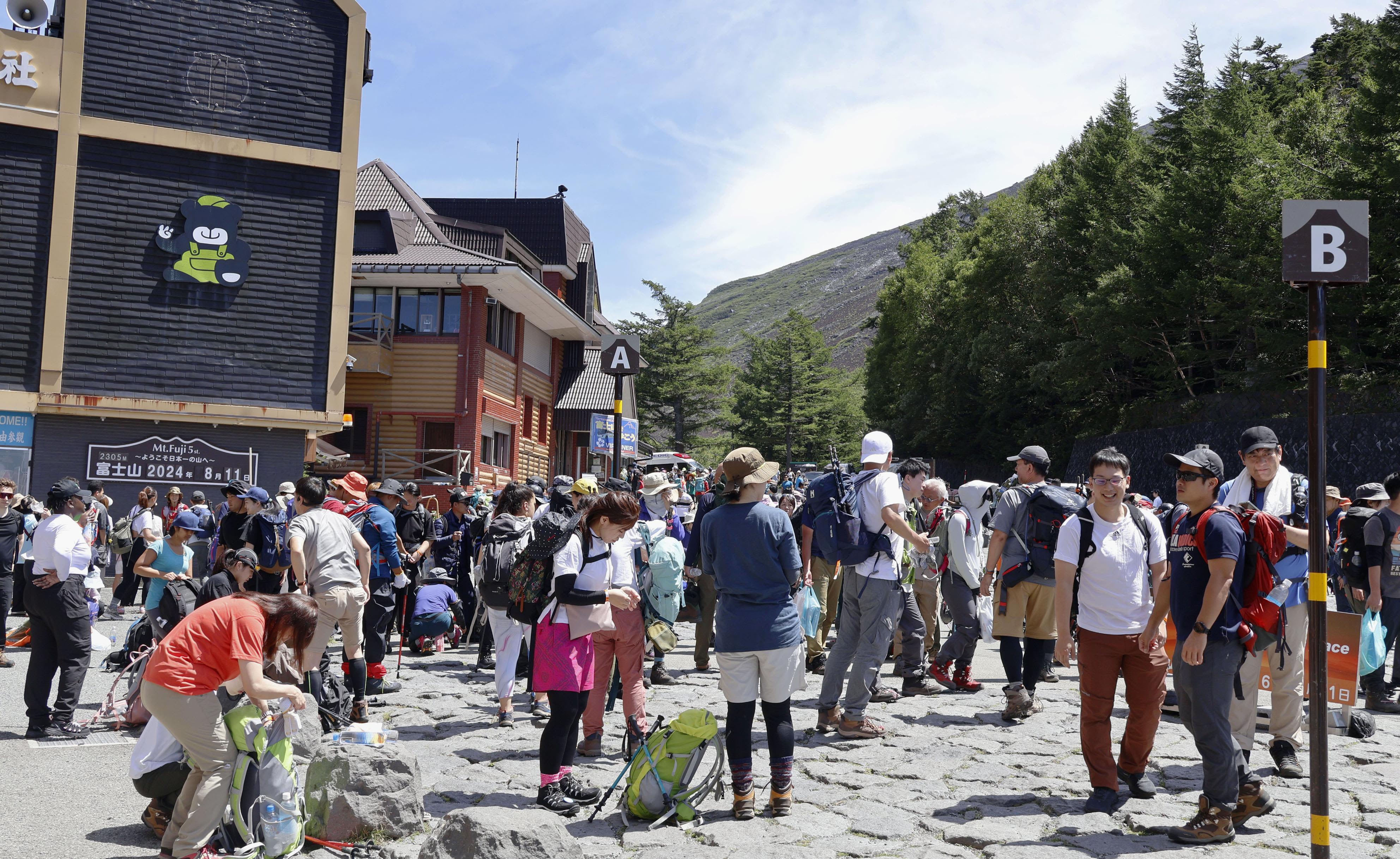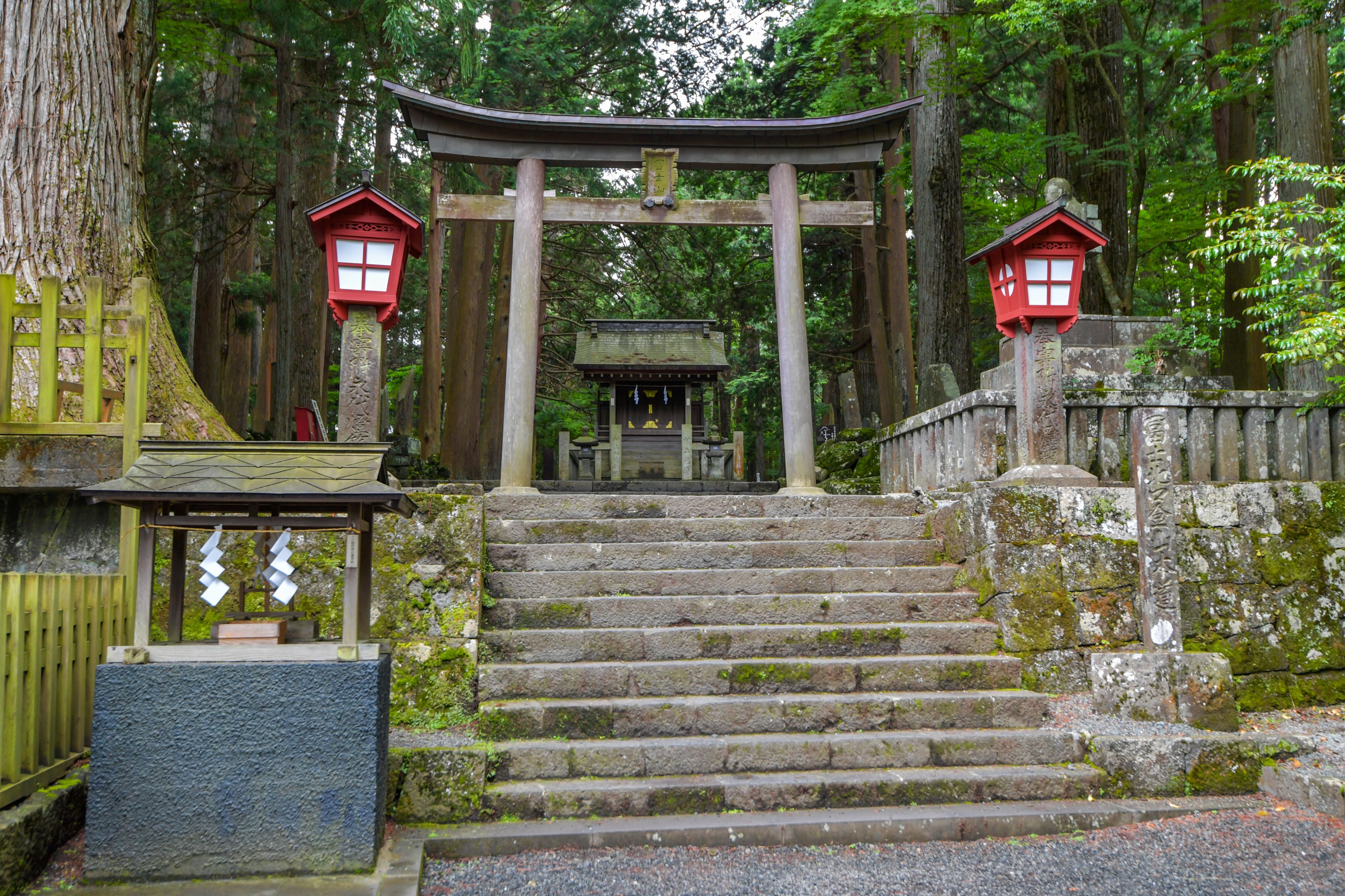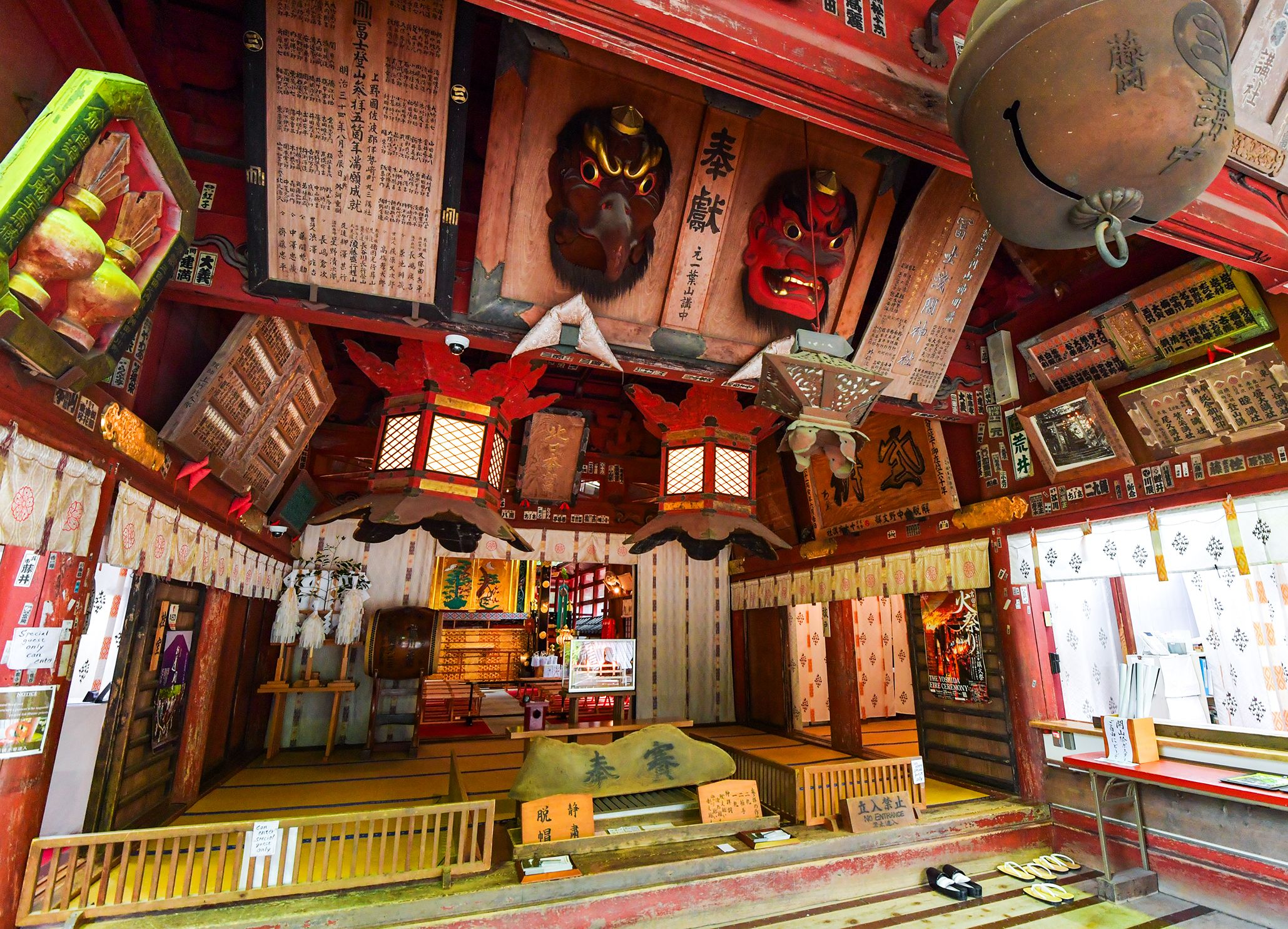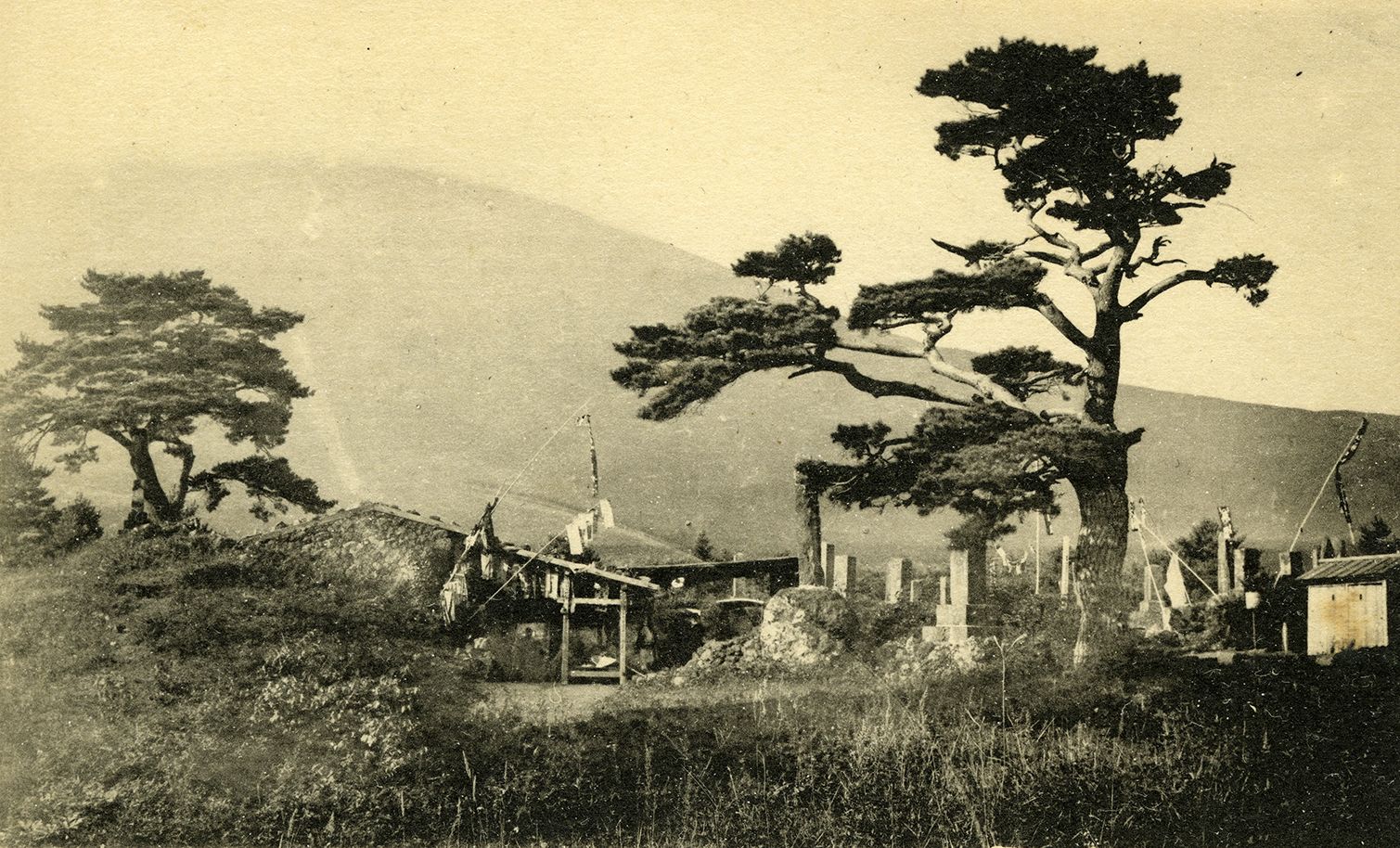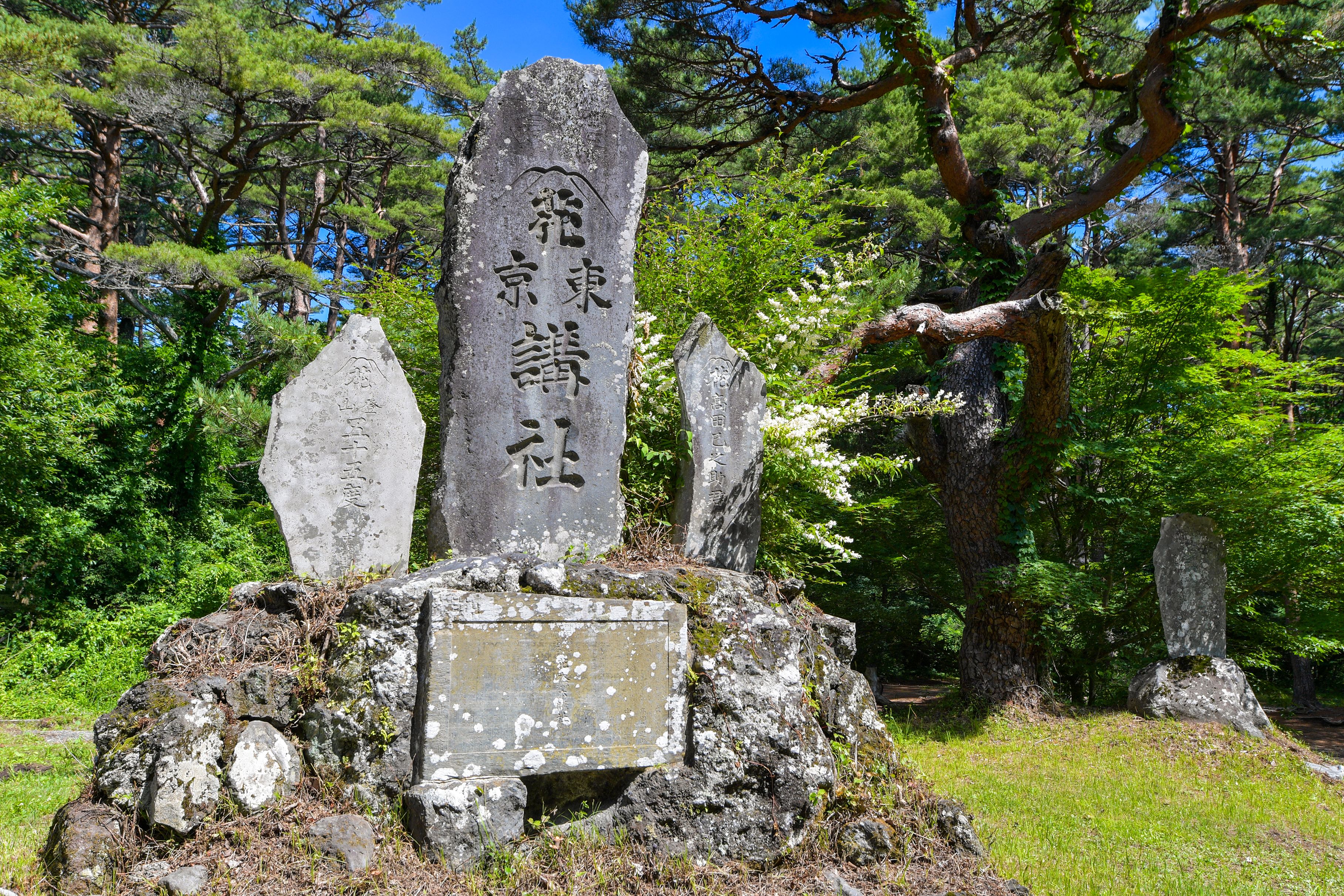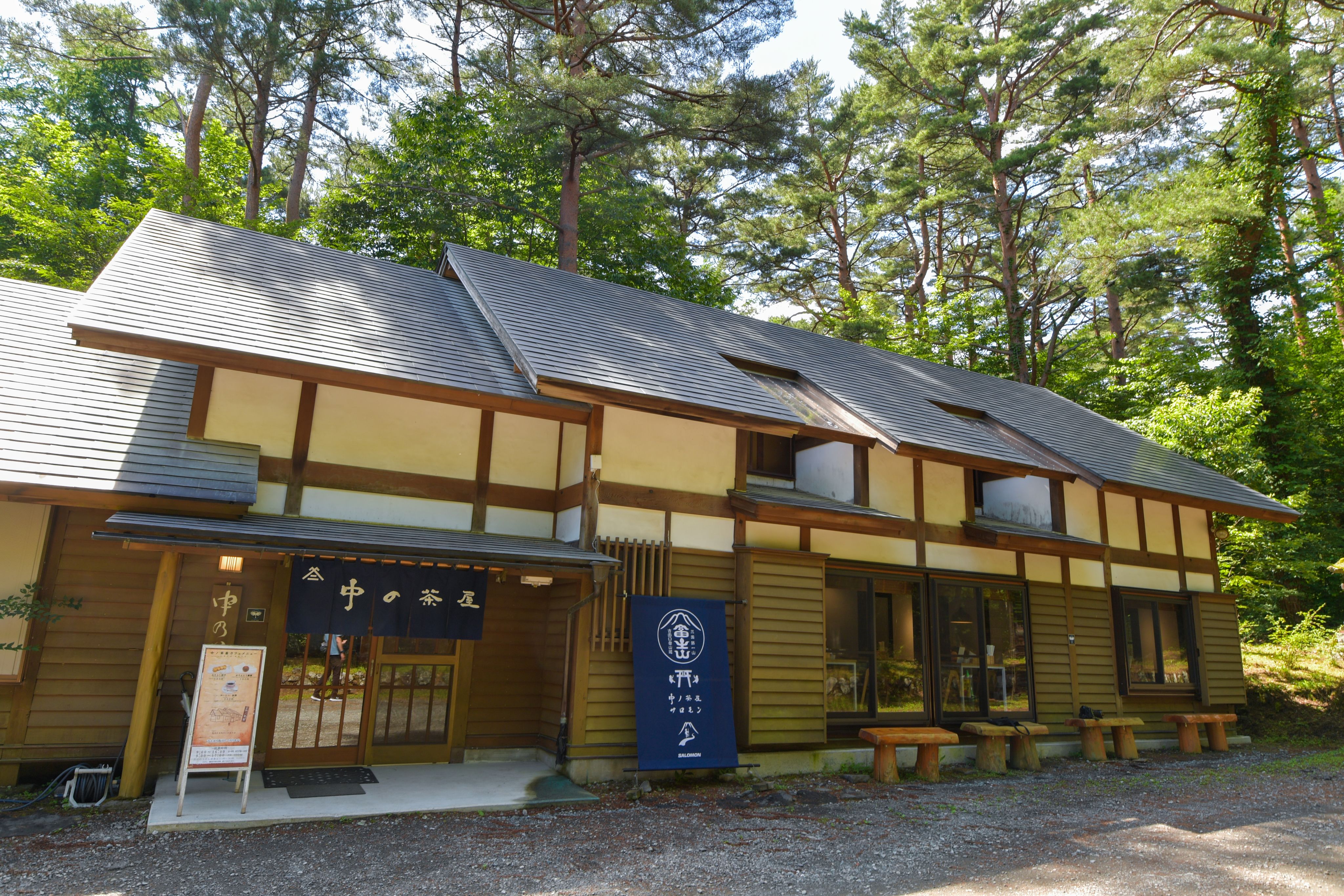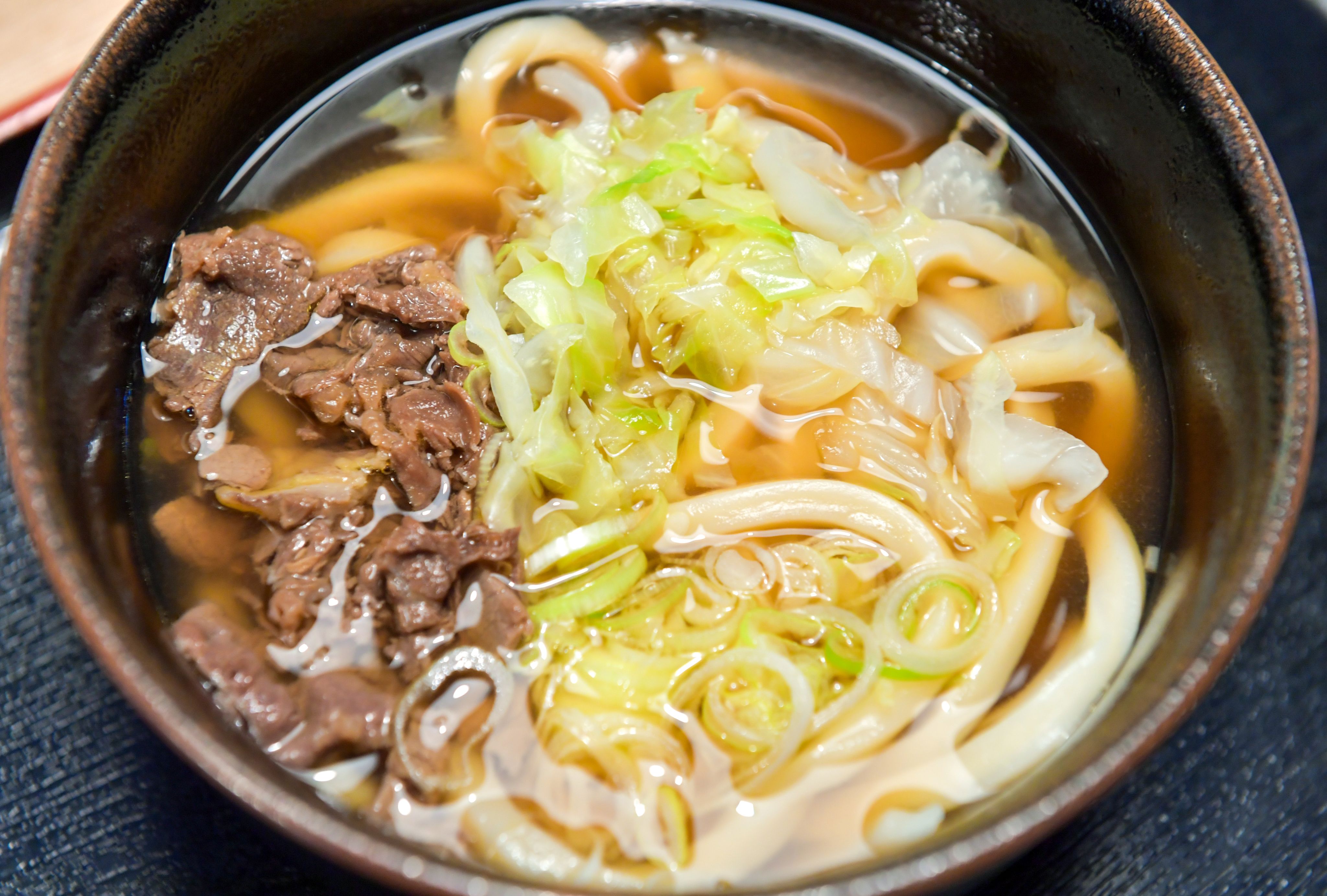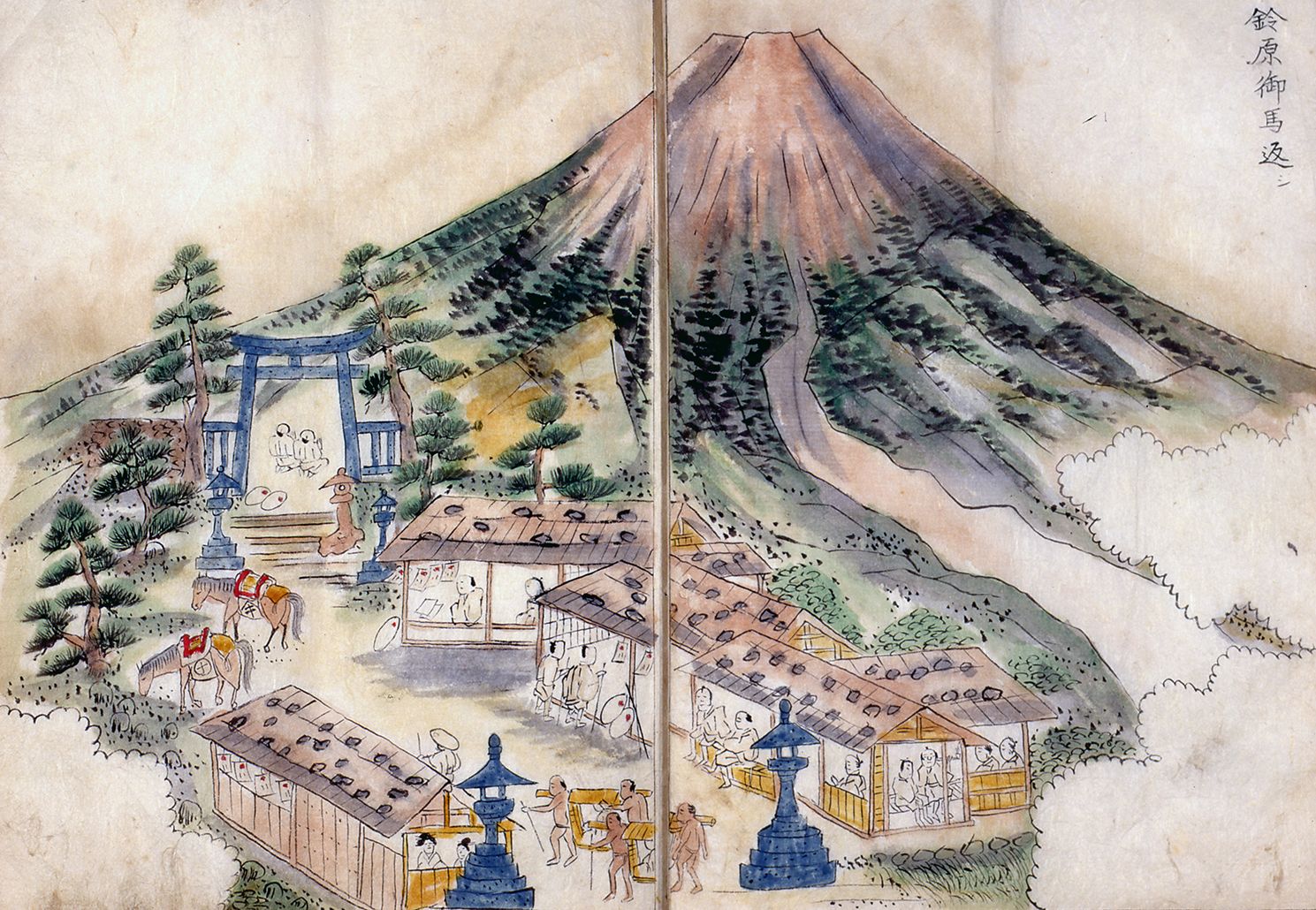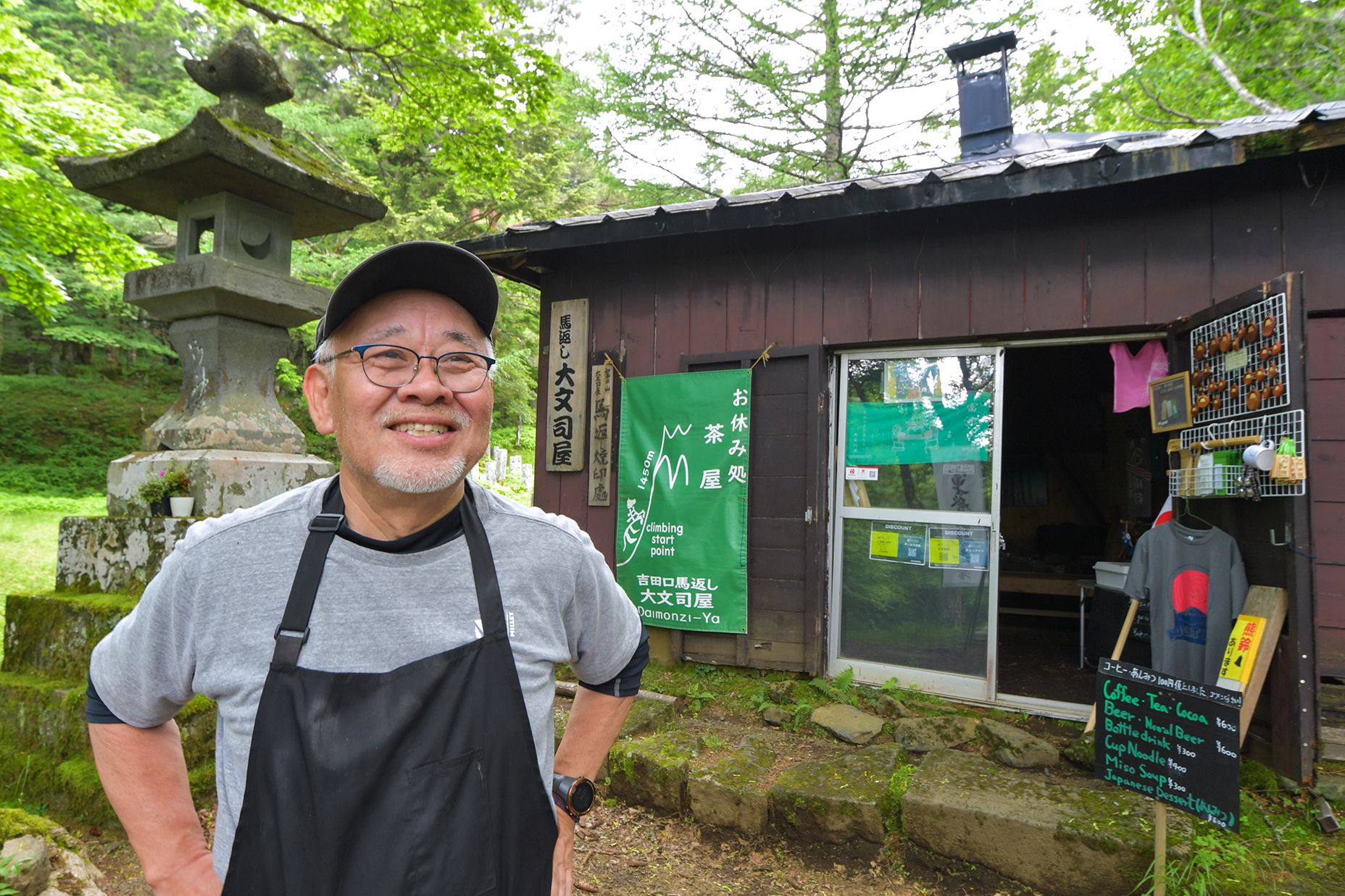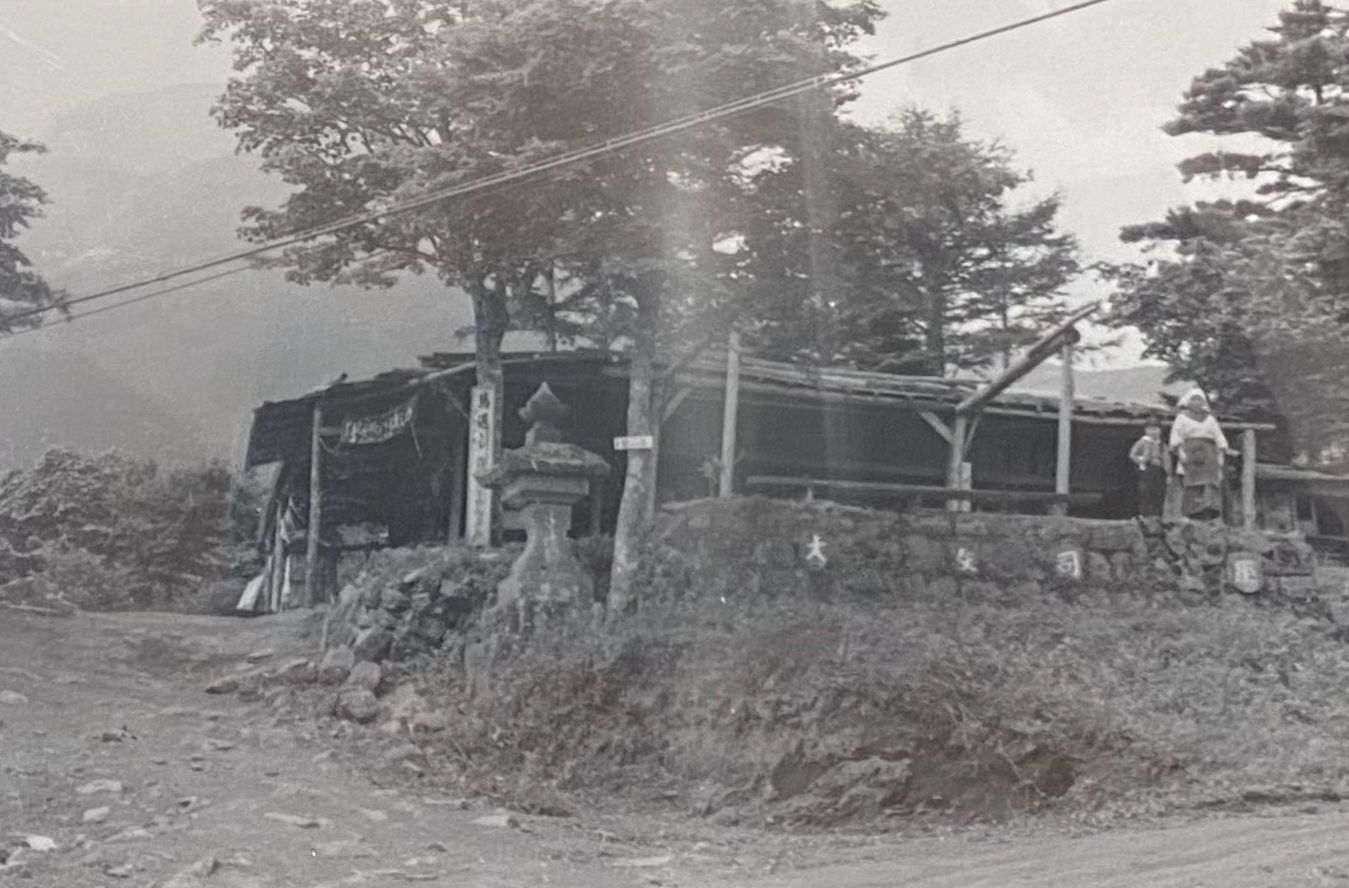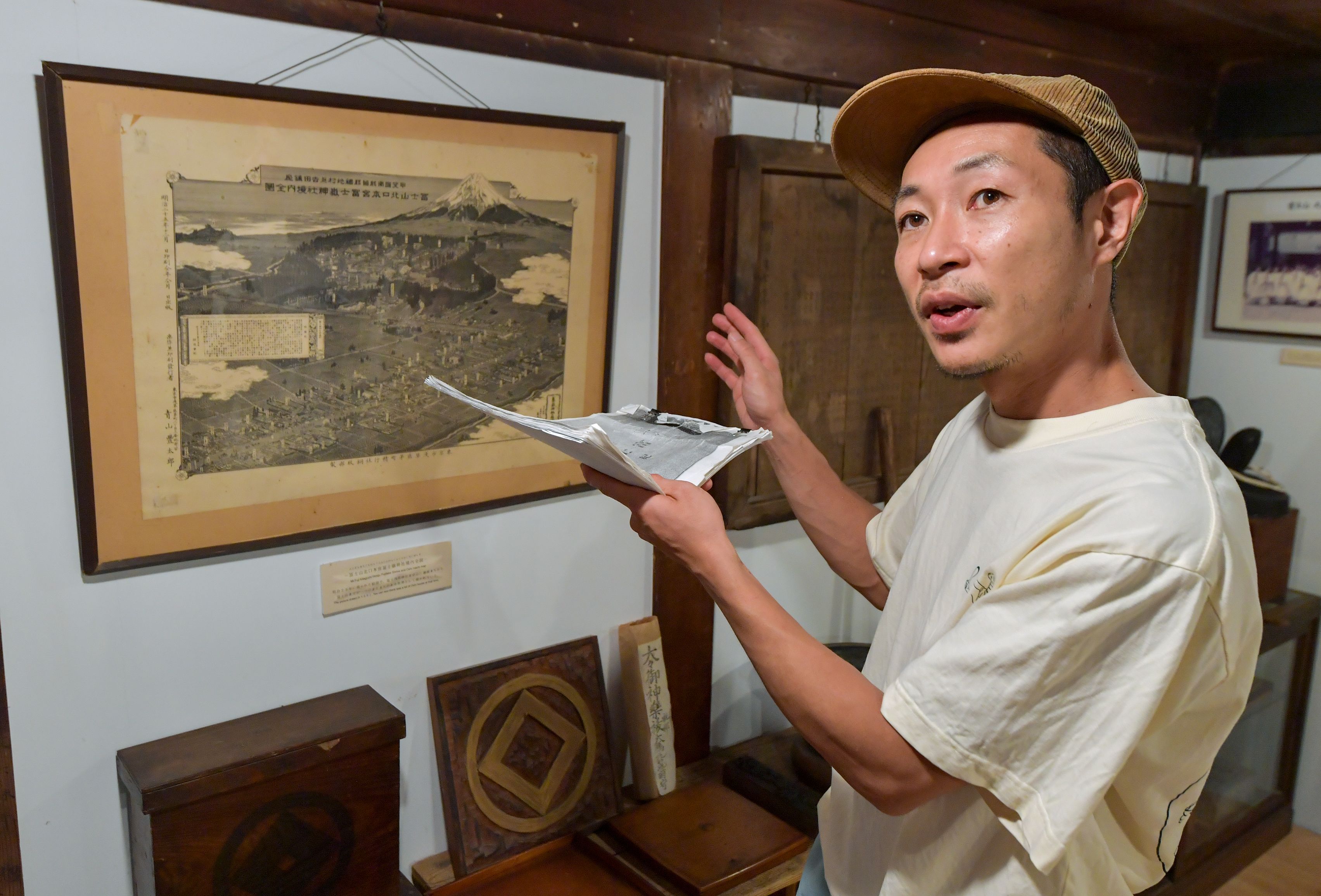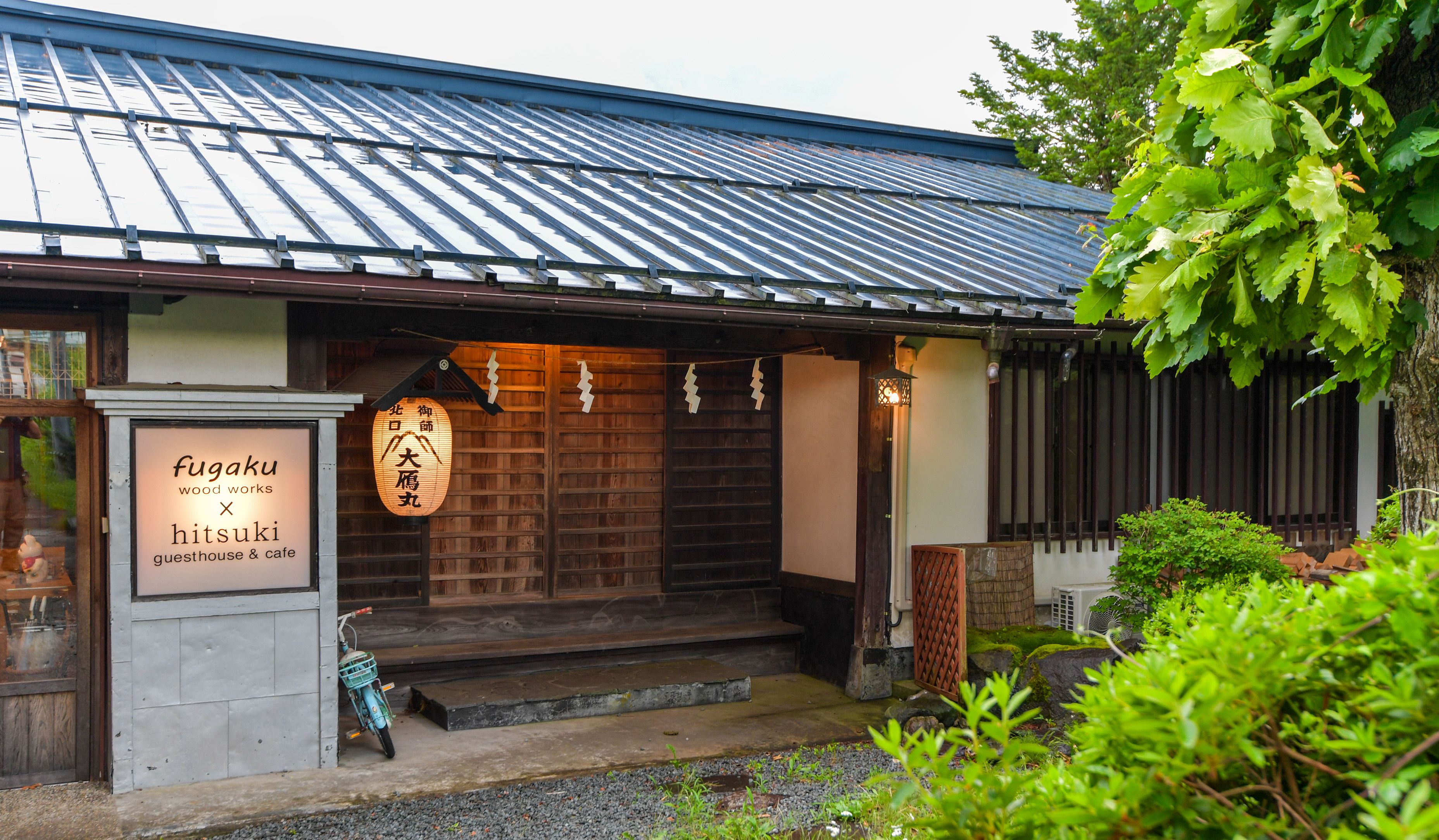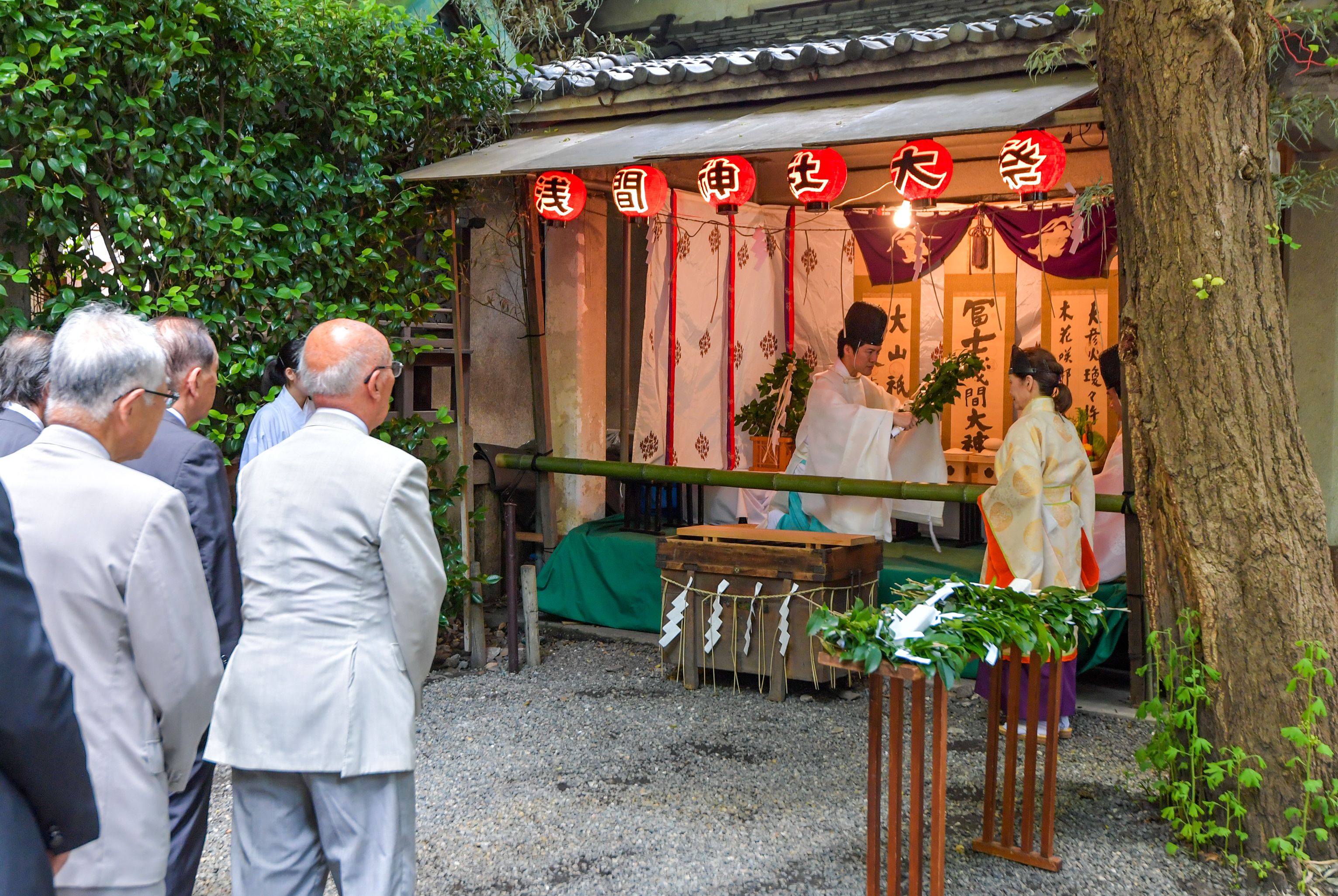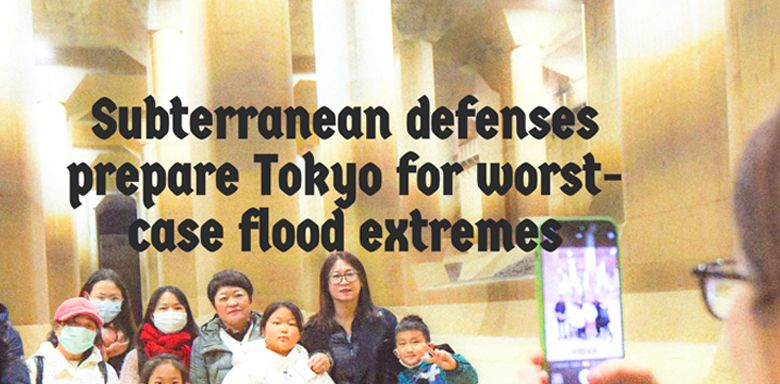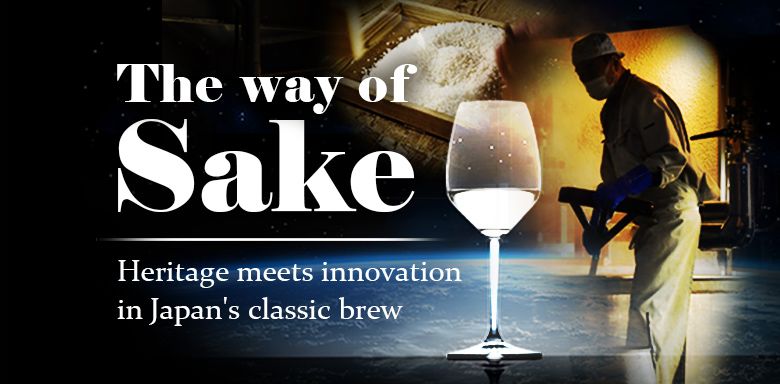Revival of revered Mt. Fuji trail
putting spirit back into climb
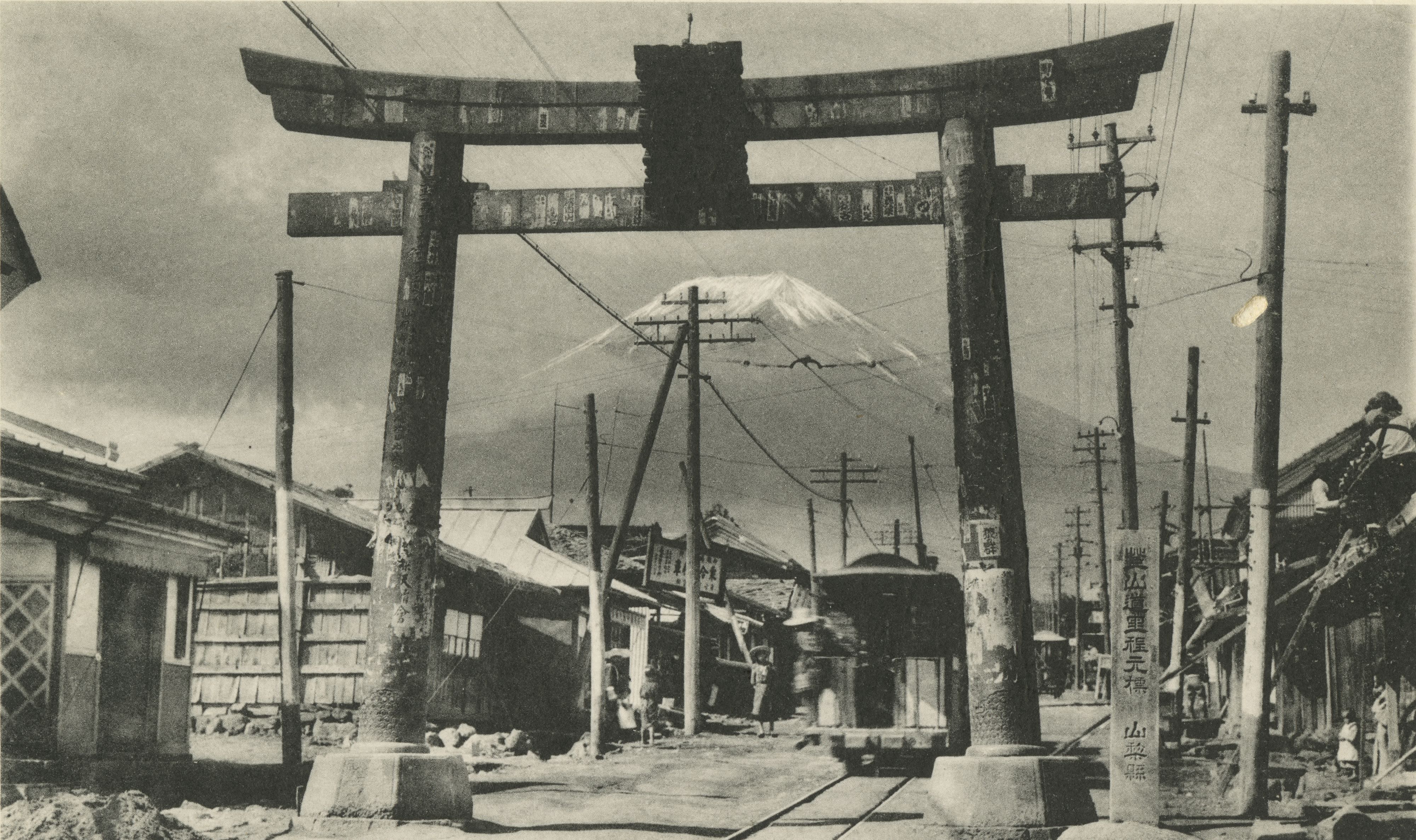
Gripped by summit fever, many Mt. Fuji climbers head straight to the mountain’s 5th stations to pick up trails to the top, leaving a once revered route largely forgotten.
Climbers gather at the 5th station of Mt. Fuji's Yoshida Trail on the Yamanashi Prefecture side of the mountain in August 2024. (Kyodo)
Climbers gather at the 5th station of Mt. Fuji's Yoshida Trail on the Yamanashi Prefecture side of the mountain in August 2024. (Kyodo)
In Fujiyoshida, Yamanashi Prefecture, the local government and residents are taking steps to spark a revival of the Yoshida Trail from the foot of Mt. Fuji to the 5th station and reintroduce visitors to the reverence with which the mountain was once held.
The trail, made popular by mountain worshippers in the late Edo Period (1603 – 1868), is the only route in Yamanashi Prefecture from the foot to the summit of the 3,776-meter mountain.
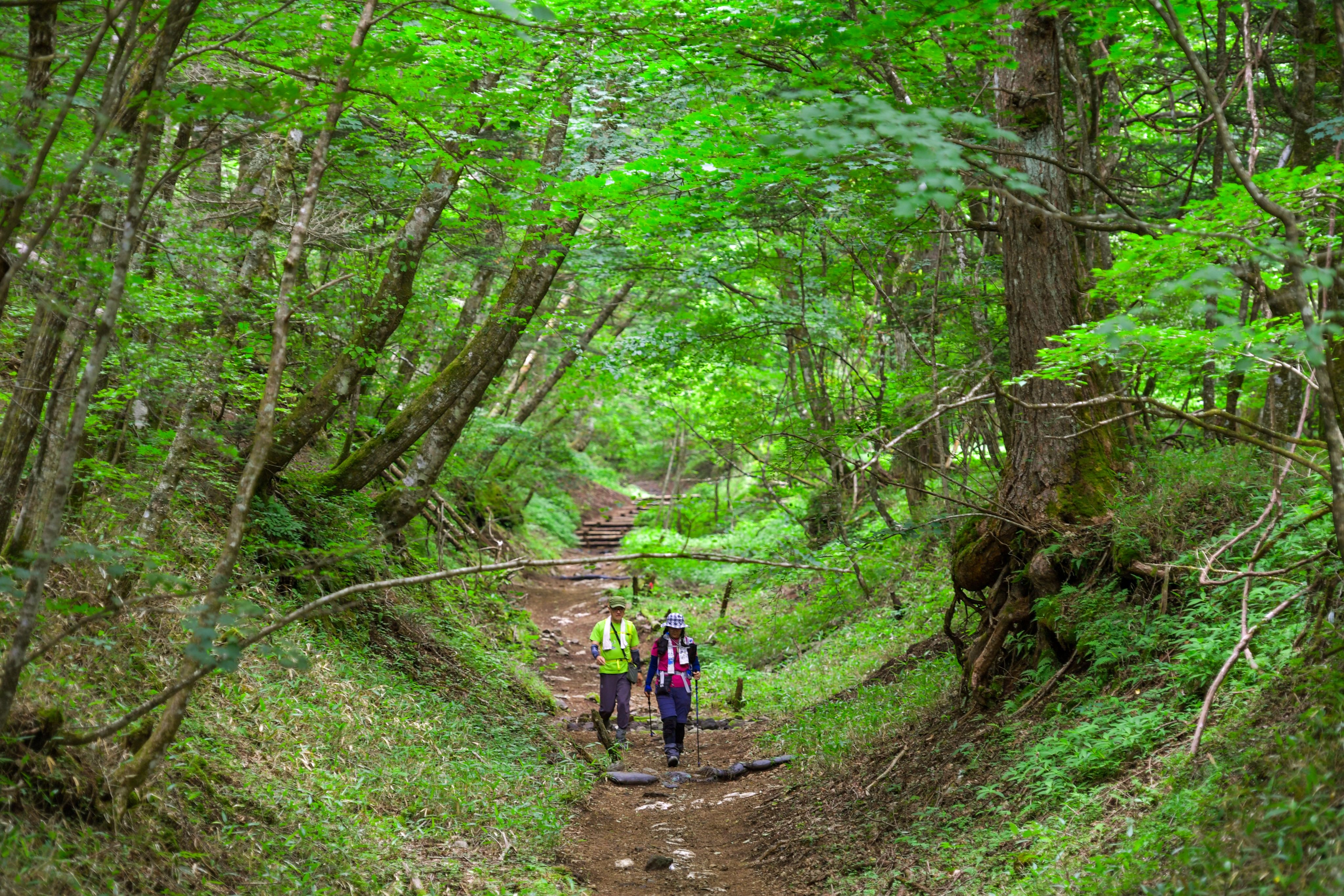
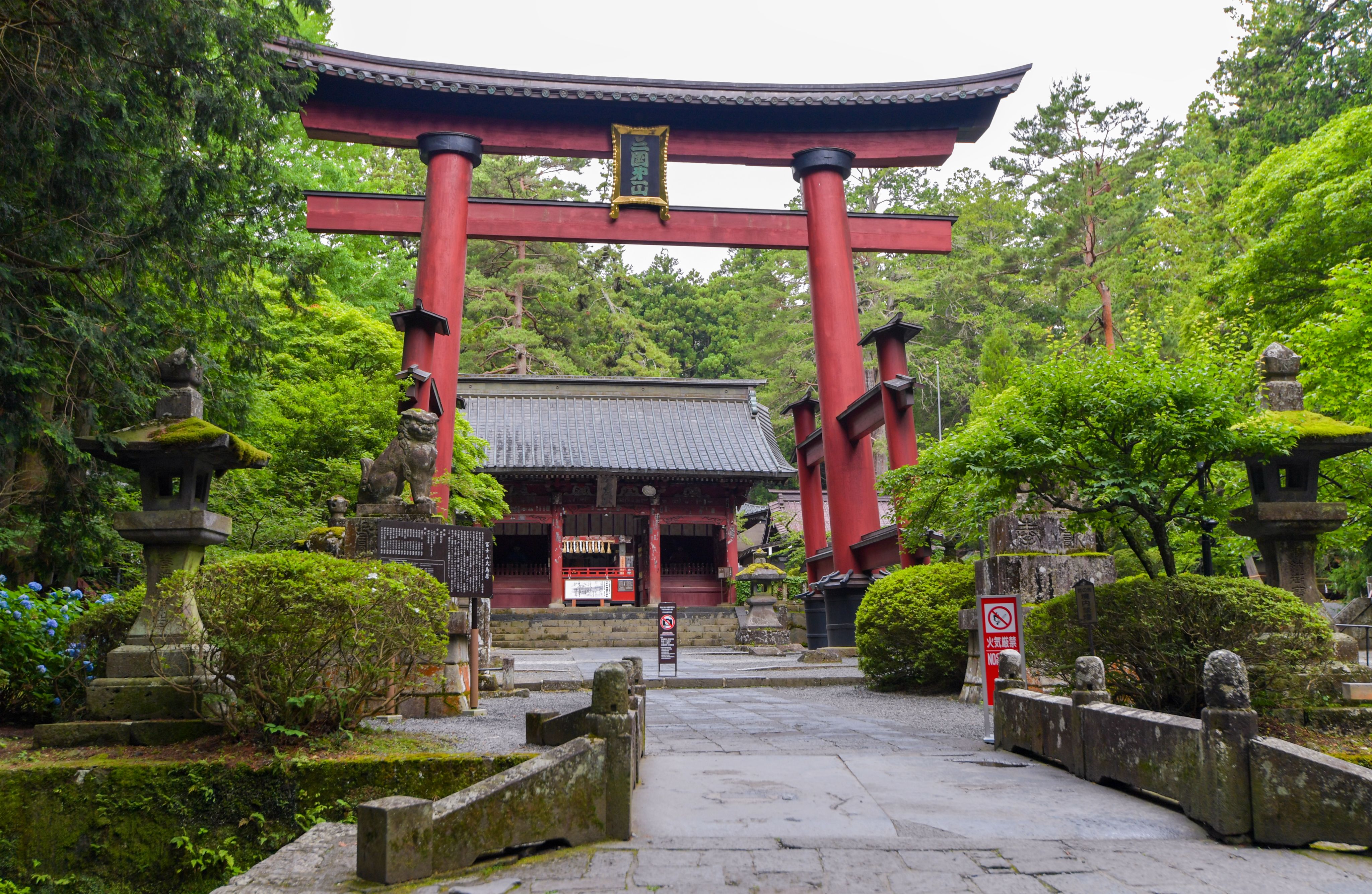
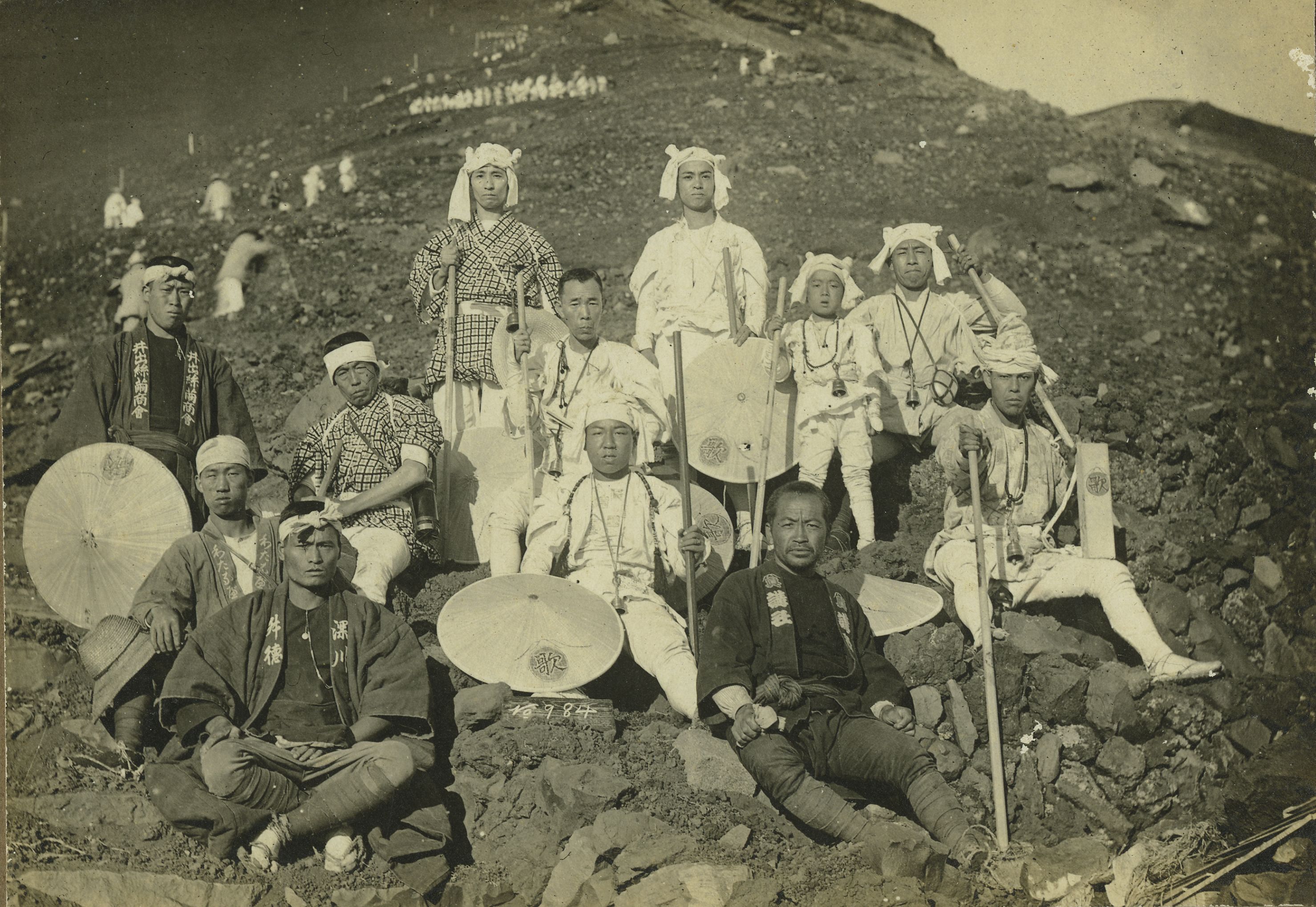
A torii gate in a quiet corner of Kitaguchi Hongu Fuji Sengen Shrine in Fujiyoshida marks the trailhead, and the beginning of a 12-hour climb to the summit.
A torii gate in the grounds of Kitaguchi Hongu Fuji Sengen Shrine marks the beginning of the Yoshida Trail.
A torii gate in the grounds of Kitaguchi Hongu Fuji Sengen Shrine marks the beginning of the Yoshida Trail.
“Before climbing, worshippers would pray at this shrine and ask permission from the mountain to make their ascent,” Yuji Kosaka, a “gonnegi,” or junior priest, at the shrine, told Japan Wire in June.
The opening in 1964 of the Fuji Subaru Line, a road connecting the foot of Mt. Fuji in Fujikawaguchiko to the Yoshida Trail at the 5th station, sped up a shift in mindset from climbing the mountain as an act of faith to one of leisure.
“The idea of the mountain as a sacred place that people should not enter lightly, that kind of thinking faded away,” Kosaka said.
Visitors started to skip the lower section of the Yoshida Trail. During the 2024 summer climbing season, 114, 857 climbers used the trail around the 8th station, according to Environment Ministry data. Kosaka thinks that fewer than 10 percent of climbers now pass through the shrine gate at the trailhead, what he refers to as the “zero station.”
Teahouses and mountain huts along the lower section of the trail also saw fewer visitors, with most falling into disrepair.
Photo shows the Nakanochaya teahouse during the late 19th to early 20th century. (Courtesy of Fujisan Museum)
Photo shows the Nakanochaya teahouse during the late 19th to early 20th century. (Courtesy of Fujisan Museum)
Nakanochaya, a teahouse dating back over 300 years, was typically seen by climbers as the first resting place after leaving the shrine. Monuments outside bear the mark of Fujiko associations -- worshippers of Mt. Fuji who made pilgrimages to the mountain, usually from Tokyo and the Kanto region.
Nakanochaya reopened on May 16 following renovations by Fujiyoshida in partnership with the outdoor brand Salomon. The reopening marked the first stage of a joint project aimed at renewing interest in the area around the foot of Mt. Fuji, including the Yoshida Trail.
As well as a rest space with maps and trail information, Nakanochaya offers showers and shoe rental. On weekends and holidays, a cafe serves steaming bowls of Yoshida udon noodles, a local specialty.
Tomonari Ozawa, from Fujiyoshida’s economics and environment department, said that through the project with Salomon, the city aims to reassess and better communicate the appeal of the area around the foot of the mountain.
“There’s a lot of great nature around Fujiyoshida but we’ve lacked the ability to communicate the real value of this to the rest of the world,” he said.
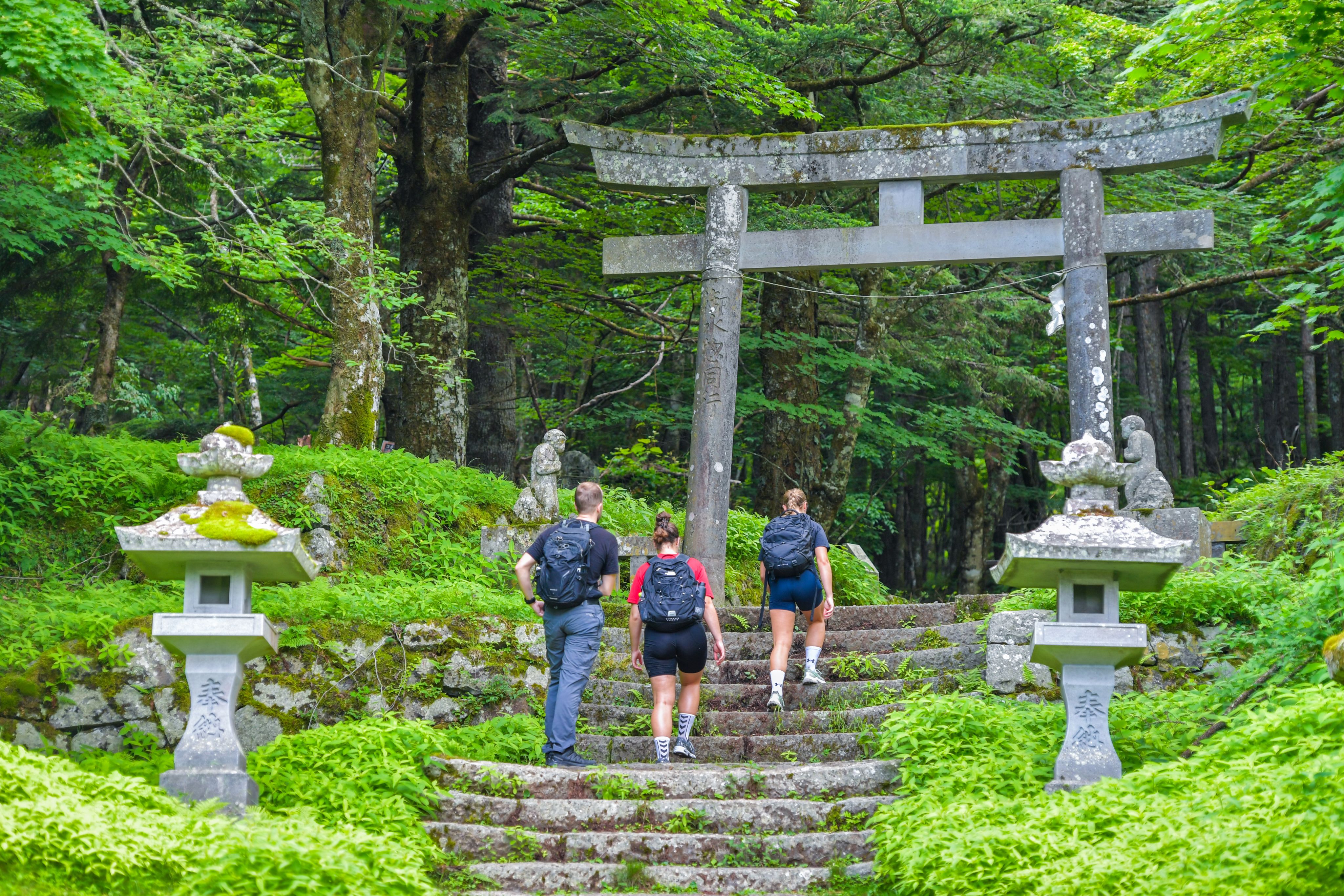
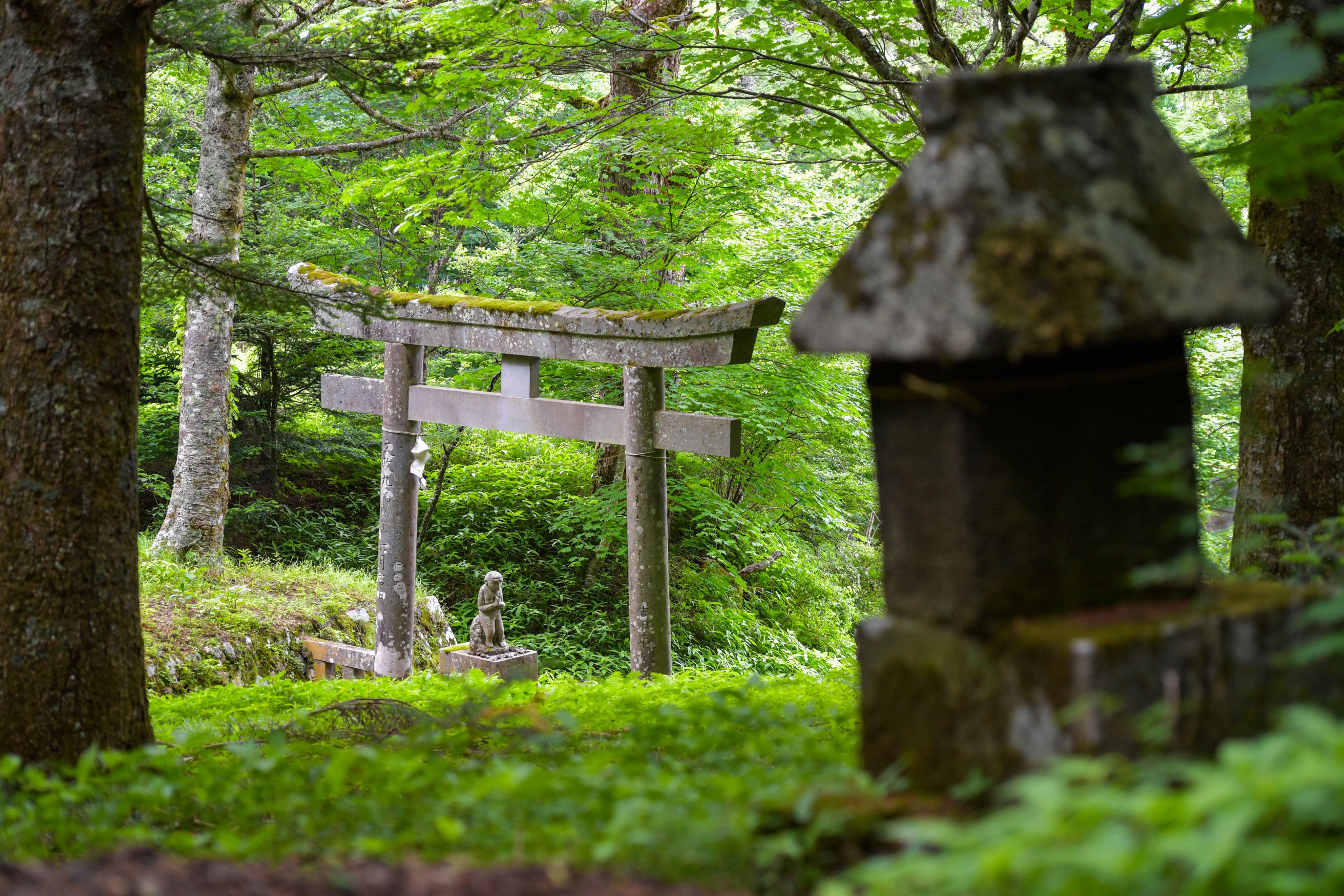
At 1,450 meters, the Yoshida Trail steepens at Umagaeshi, a point where horses carrying people and goods up the mountain could go no further.
Book titled "Fujisan Meisai Zu," a collection of illustrations from the late Edo Period, includes an impression of Umagaeshi. (Supplied photo)
Book titled "Fujisan Meisai Zu," a collection of illustrations from the late Edo Period, includes an impression of Umagaeshi. (Supplied photo)
From his teahouse overlooking the trail, Tokunaga Hada watches climbers pass through a torii gate before entering the forest.
The 6th-generation owner of Daimonzi-Ya, Hada (61) took up early retirement from his job at a university in Tokyo to revive the teahouse in September 2020. It is the only teahouse still in operation between Umagaeshi and the 5th station -- a two to three-hour climb.
After hearing of plans by Fujiyoshida to promote the trail below the 5th station, Hada said he saw value in reviving the teahouse after 56 years.
Photo shows Daimonzi-Ya shortly before it closed following the opening of the Fuji Subaru Line in 1964. (Courtesy of Tokunaga Hada, Daimonzi-Ya)
Photo shows Daimonzi-Ya shortly before it closed following the opening of the Fuji Subaru Line in 1964. (Courtesy of Tokunaga Hada, Daimonzi-Ya)
Open from April to November, Daimonzi-Ya offers a simple selection of drinks, snacks, and souvenirs. Hada carries water up to the teahouse every day and relies on a generator for electricity. “There are many difficulties in running the teahouse, but I’m doing my best,” he said. “It won’t make any money as a business, but it’s good for the trail.”
Many worshippers of Mt. Fuji prepared for an ascent of the mountain at the homes of priests known as oshi.
When worship peaked in the late Edo Period, particularly among followers of Fujiko, more than 80 oshi homes in Fujiyoshida’s Kamiyoshida district served as lodgings. Inside, priests offered food, prayers, and other guidance to worshippers ahead of the climb.
The Kamiyoshida district of Fujiyoshida, where homes of oshi priests served as lodgings for worshippers preparing to climb Mt. Fuji.
The Kamiyoshida district of Fujiyoshida, where homes of oshi priests served as lodgings for worshippers preparing to climb Mt. Fuji.
Hitoshi Ogammaru is the 18th-generation owner of his family’s oshi home, which dates back over 450 years. Its role as a lodging for worshippers ended with the 14th-generation owner as numbers dwindled.
A woodworker by trade, Ogammaru (40), together with his wife, reformed and reopened the home as Hitsuki Guesthouse and Cafe in 2016 to preserve its oshi roots.
Ogammaru introduces guests to oshi culture through displays of priest robes, pilgrimage maps, and offerings from Fujiko worshippers, among other items in the home. Around 95 percent of guests come from overseas, many of them drawn to the guesthouse because of its oshi roots.
“It shows a demand not just from people who see Mt. Fuji as an object of faith, but also from foreign tourists and other visitors,” Ogammaru said. “Hopefully what we are doing will inspire other oshi priests and homeowners to try something similar.”
Ogammaru hopes that efforts to promote oshi culture will also lead to greater respect for Mt. Fuji. “As the mountain has become more accessible, people have lost sight of its spiritual side,” he said. “In a way, we’ve got too close to the mountain.”
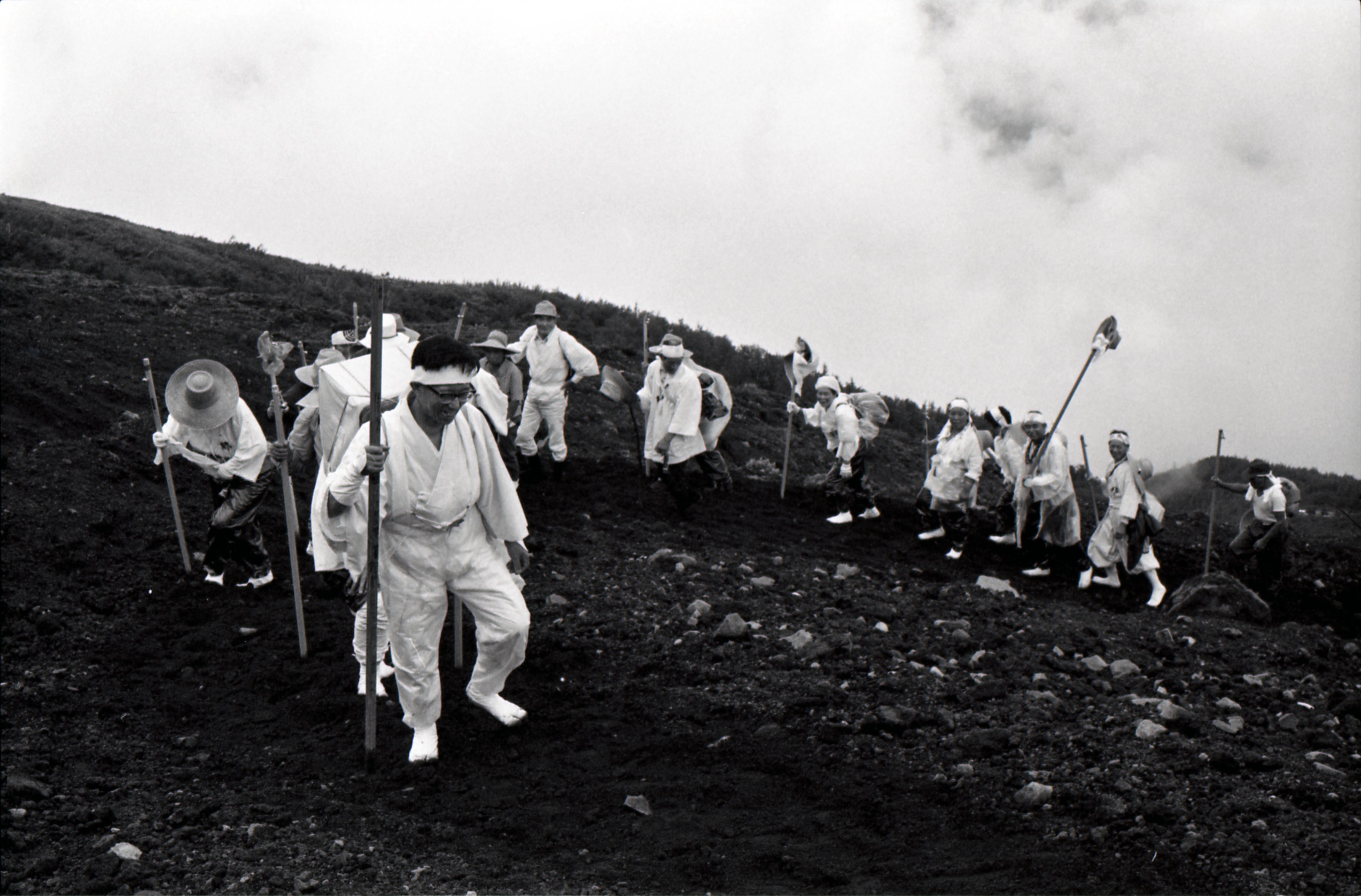
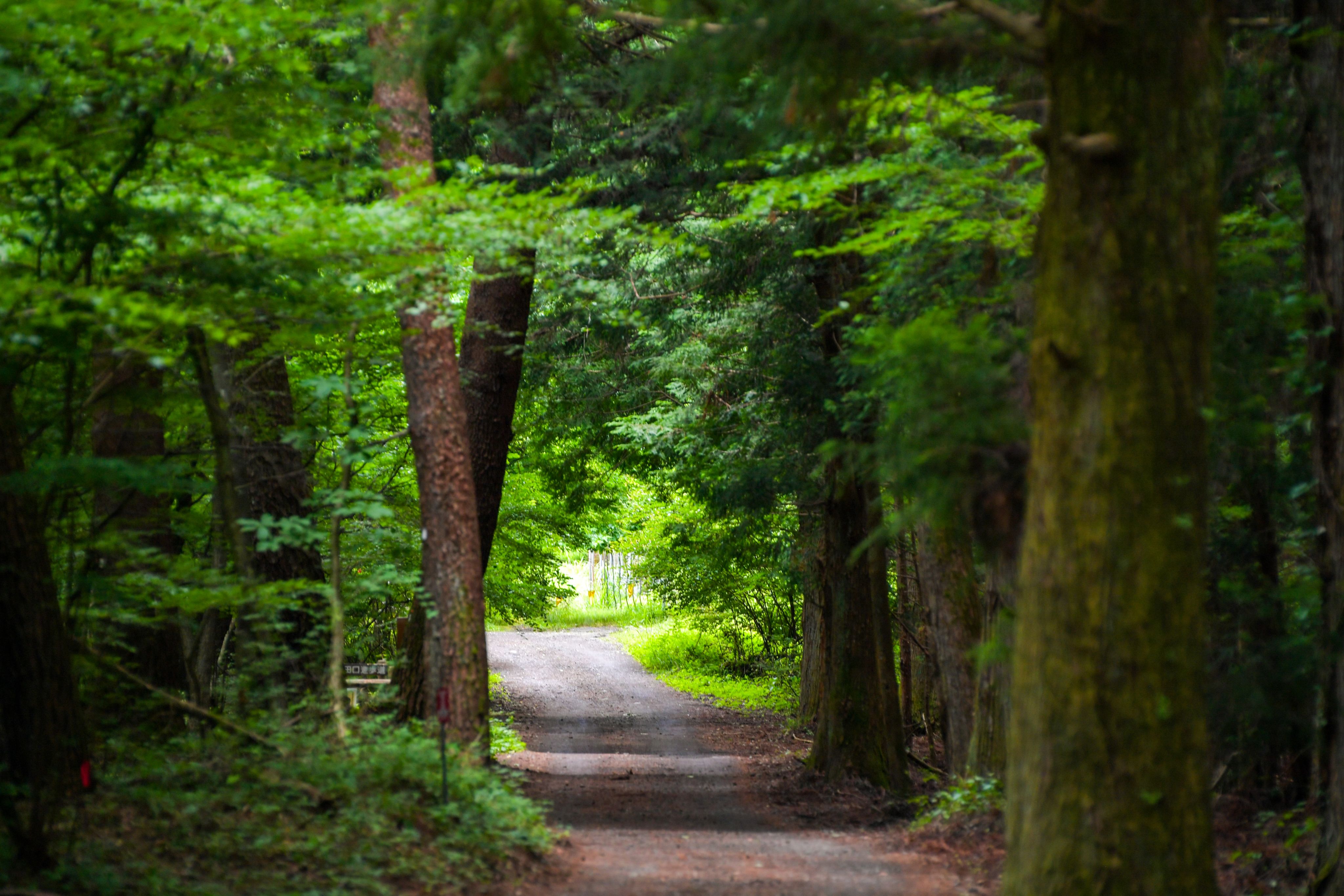
Volcanic eruptions, religious restrictions, and the expensive journey to the foot of the mountain once kept worship of Mt. Fuji at a distance. A practice which continues today.
At Onoterusaki Shrine in Tokyo’s Taito Ward, people gathered on the eve of the climbing season at the shrine’s fujizuka – a mound made in the image of Mt. Fuji, using rocks from the mountain itself.
Visitors climbed the 240-year-old mound, at the top turning to face in the direction of Mt. Fuji to offer prayers. An annual festival, held on June 30 and July 1 to mark the opening of the climbing season, is the only time visitors are permitted to climb the fujizuka.
The fujizuka at Onoterusaki was built by members of a Fujiko association during a period when restrictions prevented many people, including women, from climbing the mountain.
Karin Kodashima, a junior priest at the shrine, said she wants visitors to understand this when they climb the mound. “Our predecessors used a handcart to carry rocks all the way from Mt. Fuji. Despite all the restrictions, they wanted to make it possible for anyone to climb the mountain,” she said.
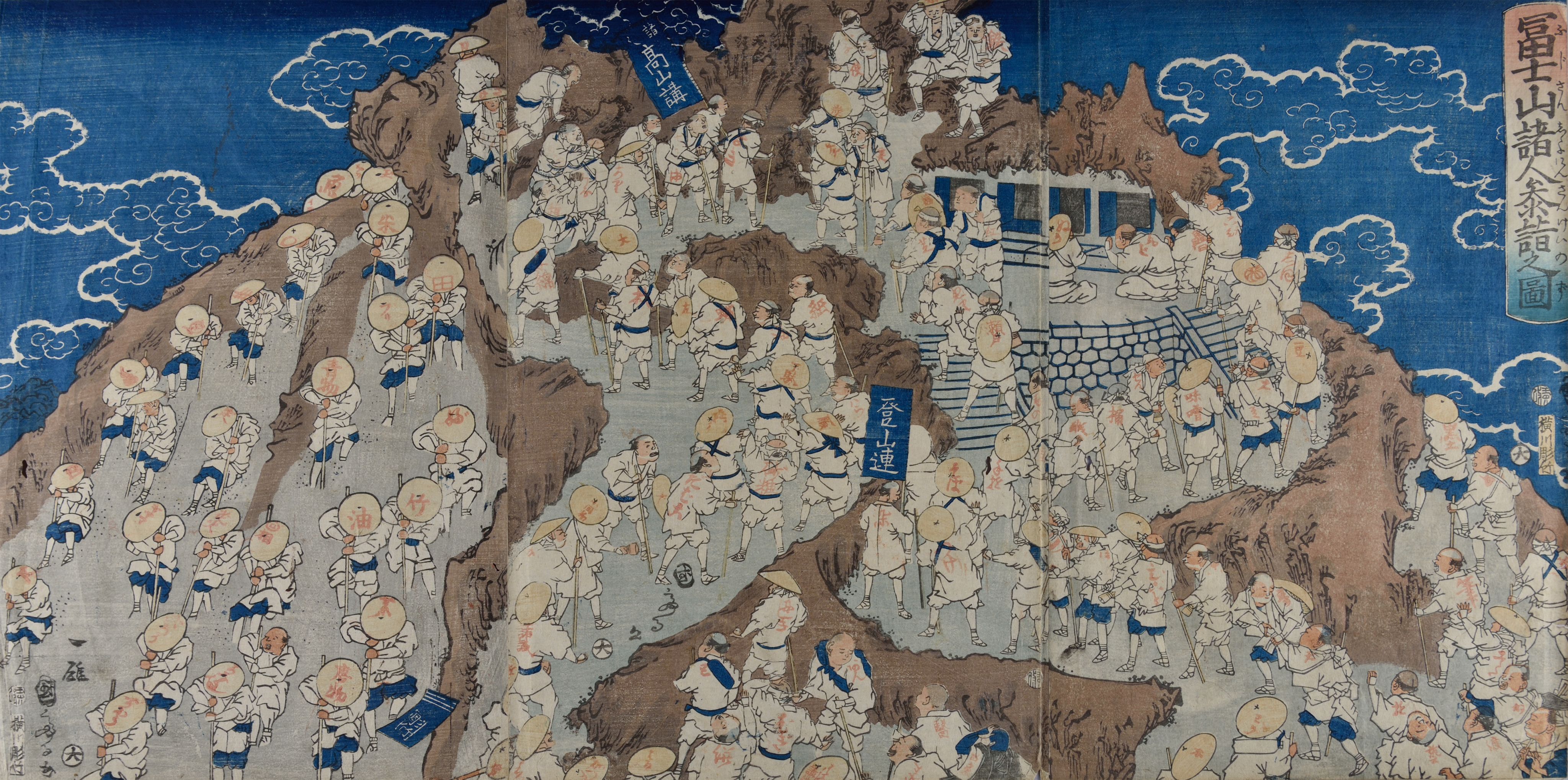
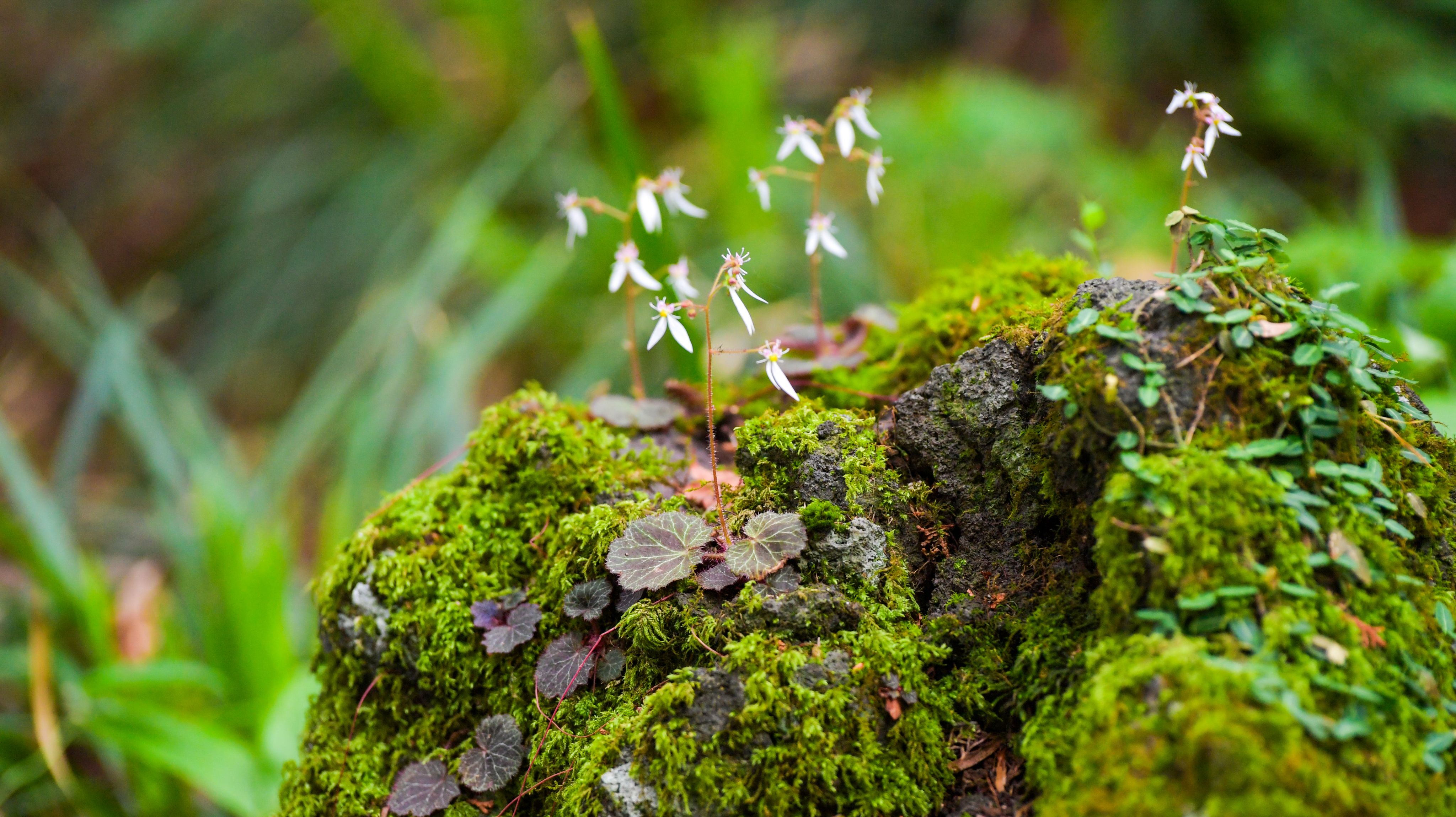
Text : Tom Shuttleworth
Photo : Yuki Murayama
Cover Photo : Courtesy of Fujisan Museum
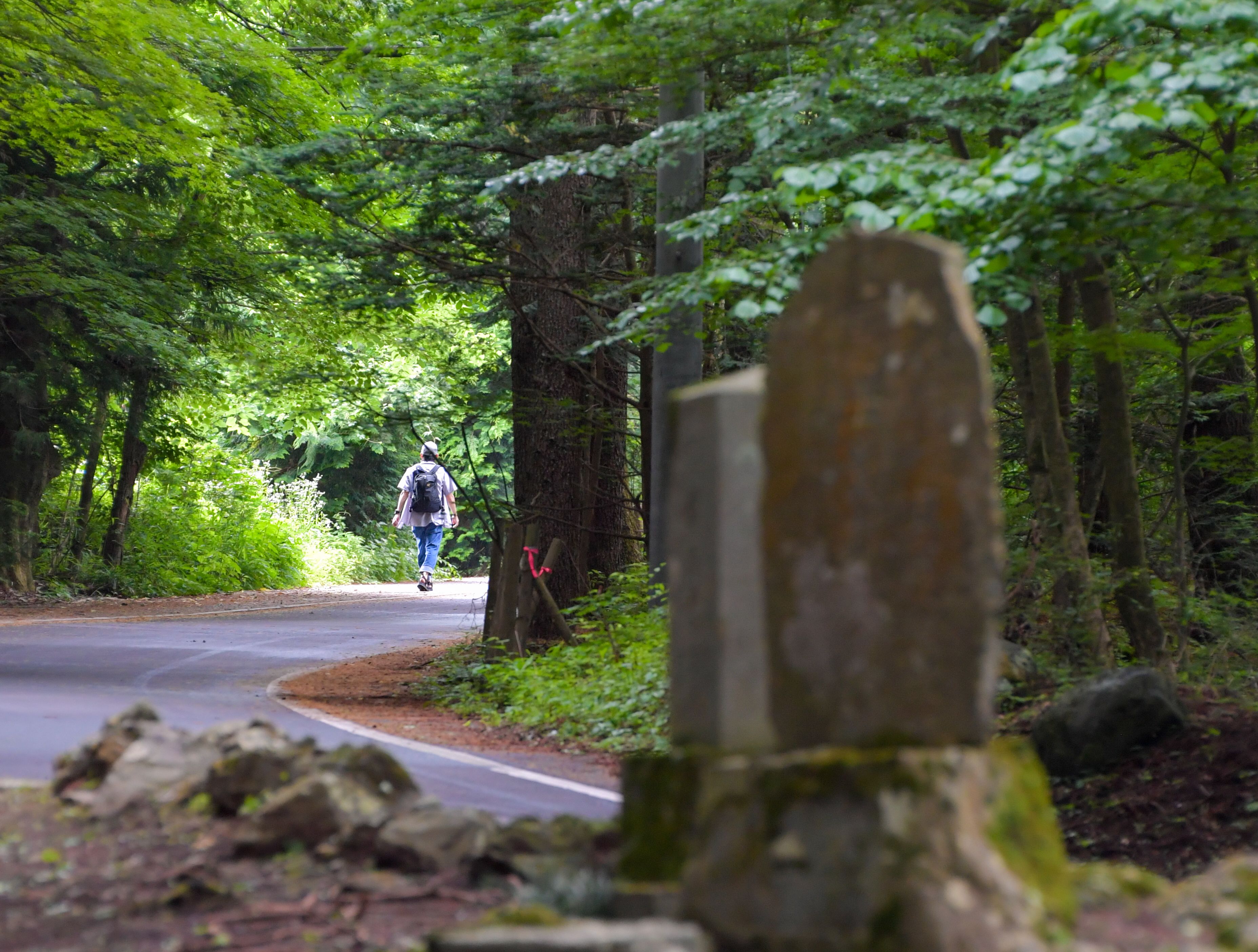
Other Spotlight Japan Stories
Matcha's moment in peril as Trump tariff threat looms over industry
Abreeze carries murmurs and quiet laughter between the rows of bright green tea leaves that are growing in dappled shade as workers harvest the plants that are destined to become matcha.
Remote Japan island, population 11, aims to become global manga hub
Visitors to Takaikamishima, in western Japan, are welcomed by a colorful cast of characters from Japanese manga which far outnumber the island's 11 residents where a revitalization project is underway.
Subterranean defenses prepare Tokyo for worst-case flood extremes
After visitors descend stairs winding 50 meters below ground, they emerge to an otherworldly sight -- a cavernous, dimly lit space with towering pillars reminiscent of a temple in ancient Rome.
The way of Sake
The addition of the traditional knowledge and skills used in sake-brewing to UNESCO's Intangible Cultural Heritage List highlighted an industry facing shrinking consumption in Japan, but eyeing growing interest abroad, and possibly beyond.
The Company uses Google Analytics, an access analysis tool provided by Google. Google Analytics uses cookies to track use of the Service. (Client ID / IP address / Viewing page URL / Referrer / Device type / Operating system / Browser type / Language /Screen resolution) Users can prevent Google Analytics, as used by the Company, from tracking their use of the Service by downloading and installing the Google Analytics opt-out add-on provided by Google, and changing the add-on settings on their browser. (https://tools.google.com/dlpage/gaoptout) For more information about how Google handles collected data: Google Analytics Terms of Service (https://policies.google.com/technologies/cookies?hl=en#types-of-cookies) Google Privacy & Terms(https://policies.google.com/privacy)
© Kyodo News. All Rights Reserved. No reproduction or republication without written permission.

